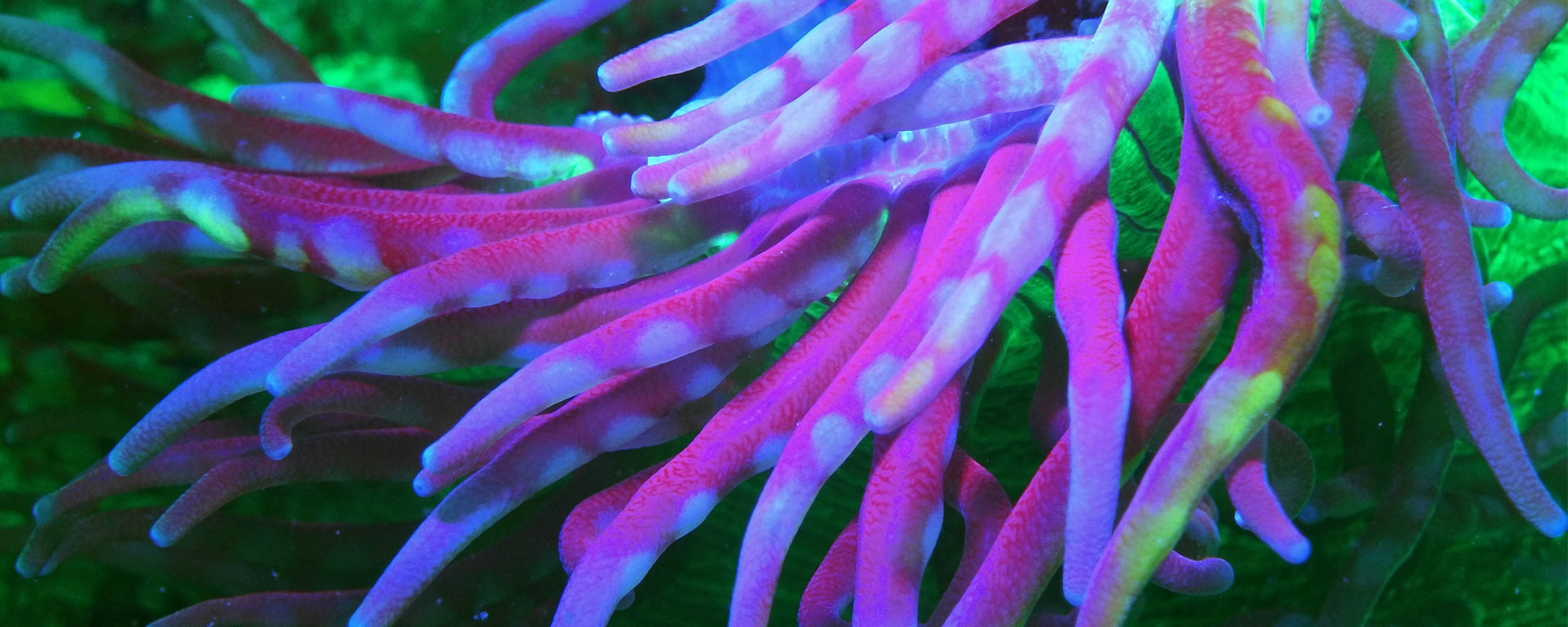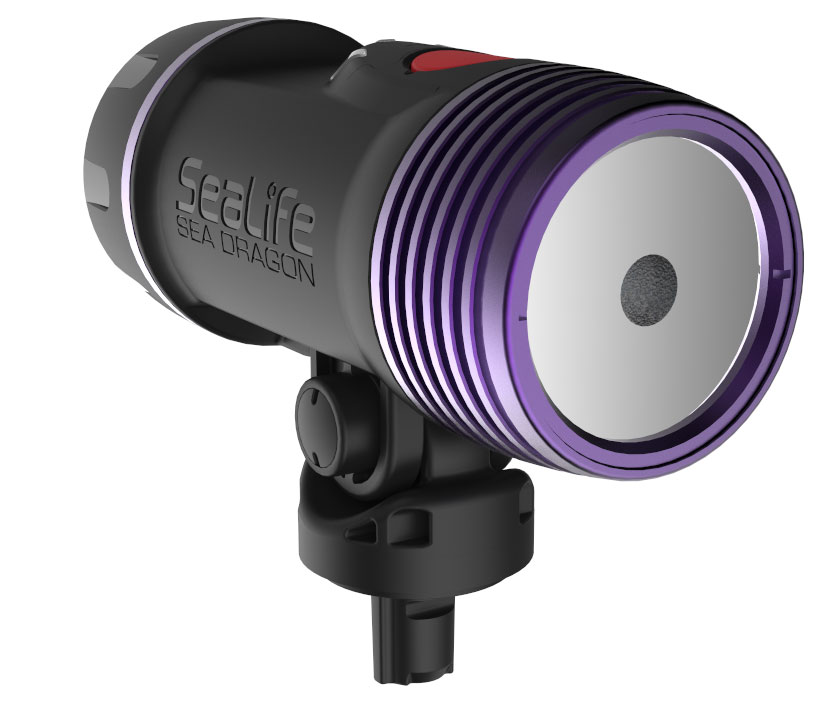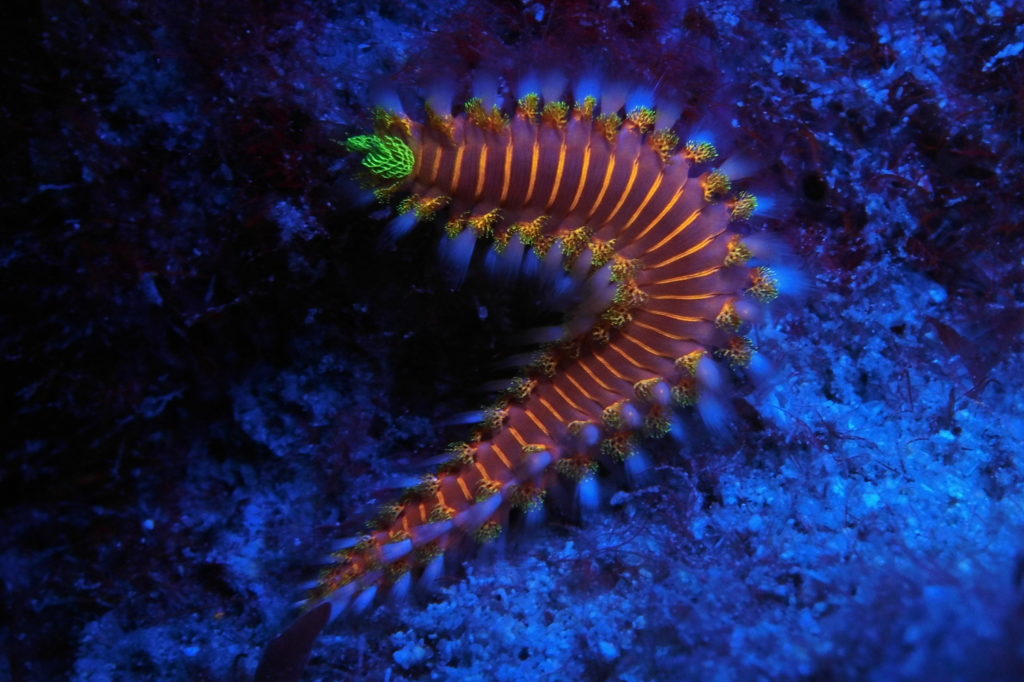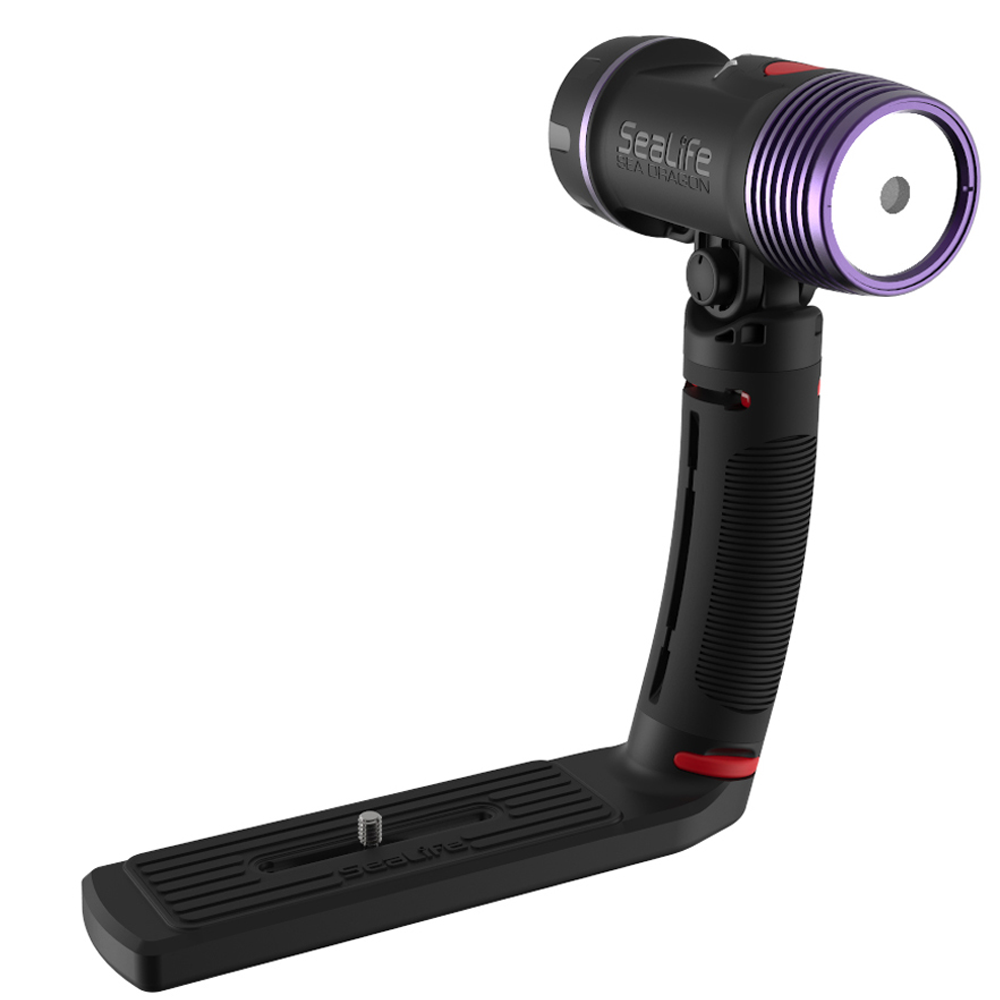
Getting Started with Fluoro Photography
Lynn Miner and the SeaLife Staff
Getting started with Fluoro imaging is easy! Fluoro, also referred to as “Fluo”, means Fluorescence in Diving or Imaging. An important thing to keep in mind is the Fluoro can be photographed, but is also an easy and breathtaking experience – whether you are or are not taking photos. And while the phenomena of fluorescence is best seen at night, it can also be experienced in the daytime – especially in deeper water. Diving in, seeing fluorescence is as simple as turning on the light: it’s easy! Darker areas and use of the yellow filters really just enhance the experience. In more detailed terms, we have three important links below. The first are scientific explanations, followed by practical use and setup information.

A common myth is that Fluoro diving uses only UV lights, this is not true. Unlike UV, Fluoro lights use a blue LED that is transmitted through a filter called a “Dichroic Filter” which narrows the beam to the precise wavelength of light to optimally “excite” the organism. The result is an energy emission called “Fluorescence”.
SeaLife uses the combination of Cree Royal Blue LED’s combined with Fire Dive Gear’s proprietary Dichroic filter in its Fluoro lights. The result is an incredible display of Fluorescence. A yellow “barrier” filter is applied to the dive mask or camera lens for the sole purpose of removing excess surrounding blue light, so all you see is the Fluorescence energy.

Here’s an example of a typical Fluoro shot that anyone can capture, with minimal training and practice:

Fire Worms make wonderful fluorescent photography targets. They display a full rainbow of colors with very subtle details that create amazing images. They are easy to shoot because they move very slowly. They are more commonly found during a night dives but can be found during the daytime. Fluoro photography is possible in daylight conditions if you work “in the shadows”, during cloudy conditions and at a depth of about 10-15 meters or more. This image was shot at 5 pm in the late afternoon at 50 feet/15 meters.
Location: Cozumel Mexico – Nov 2017
Subject: Bristle Worm / Fire Worm
Camera: SeaLife DC2000
Light: SeaLife Dual Beam Fluoro light
Barrier Filter: SeaLife/FireDiveGear
Camera Settings: Auto Focus, Macro Mode, Manual Exposure Mode, Shutter 1/125 sec, Aperture F:6.3, ISO 800
For More Fluoro Tips, check out these links:






